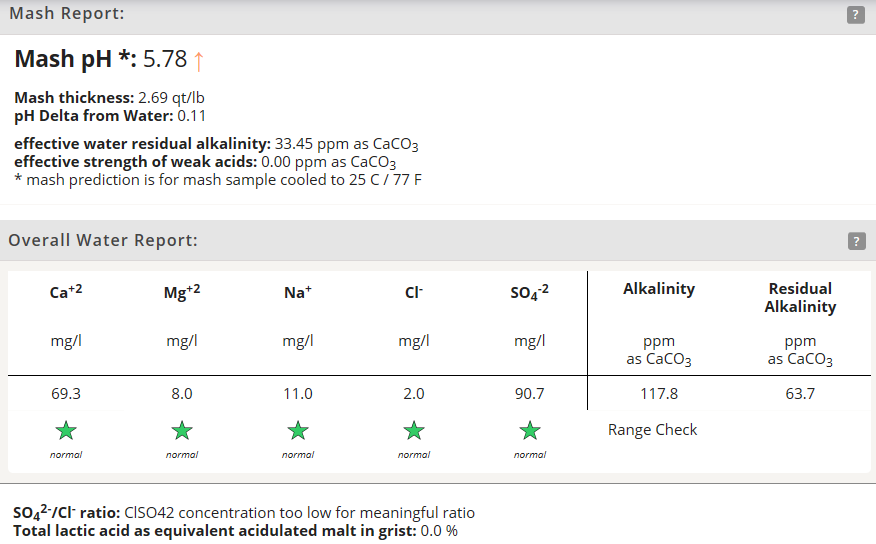Birdgunner
Well-Known Member
Hi All,
I never thought much about water except in our last house which was on a municipal system and treating for Chloramines but as I am continuing in my brewing journey and the seemingly constant chatter of additions and water manipulation surrounding NEIPA’s and Pales I figured it was time to attempt to get more educated in the subject but honestly my eyes start to glaze over with the majority of the articles I have attempted to read…
I would absolutely appreciate any insight one could provide regarding my water results, particularly pertaining to my HCO3 and CaCO2 levels and the impact those may have on various styles (if any) and how to counterbalance if need be. As a whole based on how my beers turn out I speculate I must have pretty decent foundation (water) but this is new territory for me, appreciate the sharing of knowledge and feedback!
Water Test Results
pH 7.1
Total Dissolved Solids (TDS) Est, ppm 139
Electrical Conductivity, mmho/cm 0.23
Cations / Anions, me/L 2.7 / 2.4
ppm
Sodium, Na 11
Potassium, K <1
Calcium, Ca 31.5
Magnesium, Mg 8
Total Hardness, CaCO3 113
Nitrate, NO3-N 0.1 (SAFE)
Sulfate, SO4-S <1
Chloride, Cl 2
Carbonate, CO3 < 1.0
Bicarbonate, HCO3 142
Total Alkalinity, CaCO3 117
Total Phosphorus, P 0.07
Total Iron, Fe < 0.50
Thanks!
I never thought much about water except in our last house which was on a municipal system and treating for Chloramines but as I am continuing in my brewing journey and the seemingly constant chatter of additions and water manipulation surrounding NEIPA’s and Pales I figured it was time to attempt to get more educated in the subject but honestly my eyes start to glaze over with the majority of the articles I have attempted to read…
I would absolutely appreciate any insight one could provide regarding my water results, particularly pertaining to my HCO3 and CaCO2 levels and the impact those may have on various styles (if any) and how to counterbalance if need be. As a whole based on how my beers turn out I speculate I must have pretty decent foundation (water) but this is new territory for me, appreciate the sharing of knowledge and feedback!
Water Test Results
pH 7.1
Total Dissolved Solids (TDS) Est, ppm 139
Electrical Conductivity, mmho/cm 0.23
Cations / Anions, me/L 2.7 / 2.4
ppm
Sodium, Na 11
Potassium, K <1
Calcium, Ca 31.5
Magnesium, Mg 8
Total Hardness, CaCO3 113
Nitrate, NO3-N 0.1 (SAFE)
Sulfate, SO4-S <1
Chloride, Cl 2
Carbonate, CO3 < 1.0
Bicarbonate, HCO3 142
Total Alkalinity, CaCO3 117
Total Phosphorus, P 0.07
Total Iron, Fe < 0.50
Thanks!




